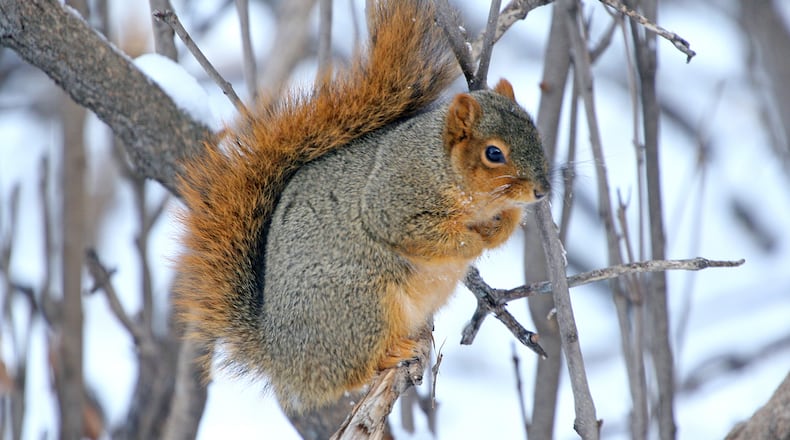For Georgia’s four native squirrel species, October is a critical month. Their top priority now is gathering up and hoarding acorns, hickory nuts, seeds and other fall bounty for winter. Squirrels don’t hibernate, so they must store enough food in fall to help them survive the cold season.
In addition to the familiar Eastern gray squirrel, Georgia’s other squirrel species include the Eastern fox squirrel and the Southern flying squirrel, all of which occur throughout the state. A fourth species, the red squirrel, is found only in the higher elevations of the Blue Ridge Mountains.
Despite their differences, the four species go about preparing for winter in much the same way — collecting and caching nuts, acorns and seeds for retrieval in winter. They will relocate their stashes mostly by smell. However, they probably will find only a portion of their buried nuts, thus unwittingly planting a new tree.
The flying squirrel, Georgia’s smallest squirrel, is perhaps the most efficient at collecting and storing food for winter. During fall, a flying squirrel may collect more than 15,000 acorns and other seeds and bury them or hide them in nests and tree crevices.
Flying squirrels can glide through the air because of special skin folds that connect their front and hind limbs. Almost exclusively nocturnal, they do most of their nut gathering at night and thus are rarely seen.
Every Georgian probably is familiar with the state’s medium-size squirrel — the seemingly ubiquitous Eastern gray squirrel, which inhabits yards, neighborhoods and forests all over Georgia. In one hour on a fall day, a gray squirrel can collect and bury 25-50 nuts.
Gray squirrels need a lot of food: A single adult eats about 1.5 pounds of seeds, nuts and other foods every week — roughly equivalent to its own body weight.
Georgia’s largest squirrel, the Eastern fox squirrel, is nearly twice the size of the gray squirrel but less common. Although its coloration varies considerably, it’s so-named because its gray and red fur coat resembles that of a gray fox. It, too, can bury several thousand nuts over three months.
IN THE SKY: From David Dundee, Tellus Science Museum astronomer: The moon will be last quarter on Thursday. Venus is high in the west around dusk. Jupiter and Saturn are in the southwest at dark.
Charles Seabrook can be reached at charles.seabrook@yahoo.com.
About the Author
Keep Reading
The Latest
Featured


